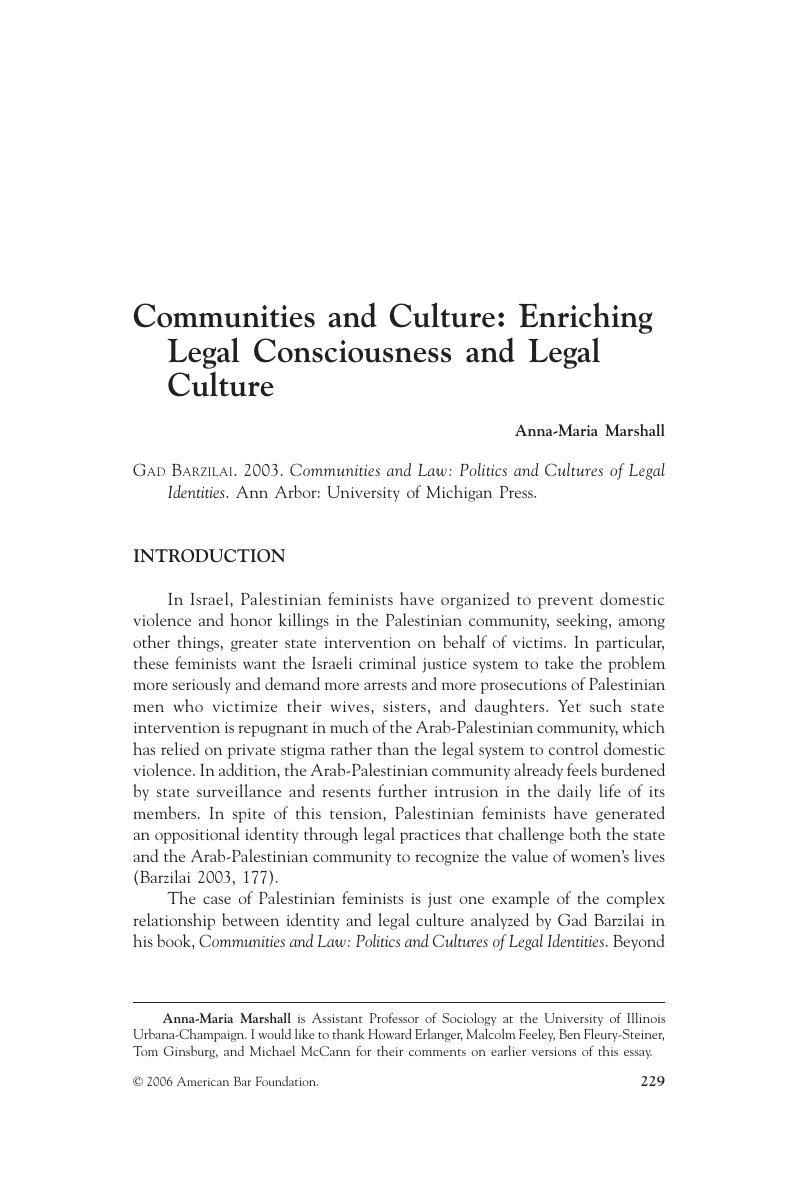Crossref Citations
This article has been cited by the following publications. This list is generated based on data provided by Crossref.
Shinohara, Chika
2009.
Perceiving Gender Locally, Globally, and Intersectionally.
Vol. 13,
Issue. ,
p.
267.
Dagan, Tsilly
and
Fisher, Talia
2011.
The State and the Market - A Parable: On the State's Commodifying Effects.
SSRN Electronic Journal,
Myrick, Amy
2013.
Facing Your Criminal Record: Expungement and the Collateral Problem of Wrongfully Represented Self.
Law & Society Review,
Vol. 47,
Issue. 1,
p.
73.
Kojder, Andrzej
and
Cywiński, Zbigniew
2014.
Socjologia prawa. Główne problemy i postacie.
Graca, Sofia
2018.
Portuguese culture and legal consciousness: a discussion of immigrant women's perceptions of and reactions to domestic violence.
International Journal of Law in Context,
Vol. 14,
Issue. 3,
p.
416.
Liu, Lin
2020.
The conditions for progressive rights to bring about social change.
Contemporary Justice Review,
Vol. 23,
Issue. 3,
p.
222.





